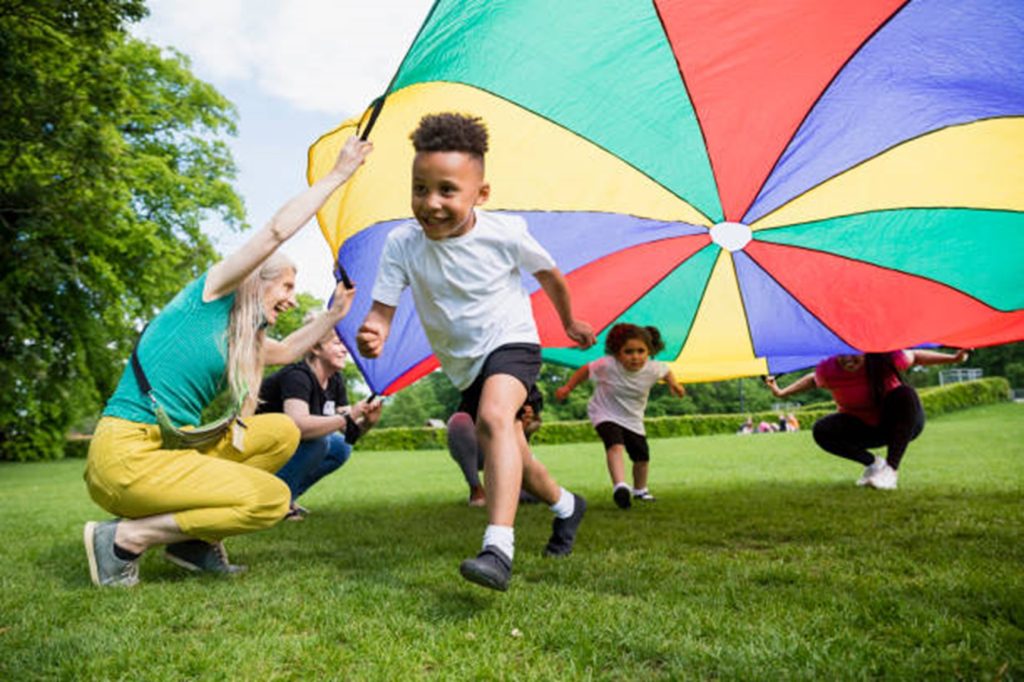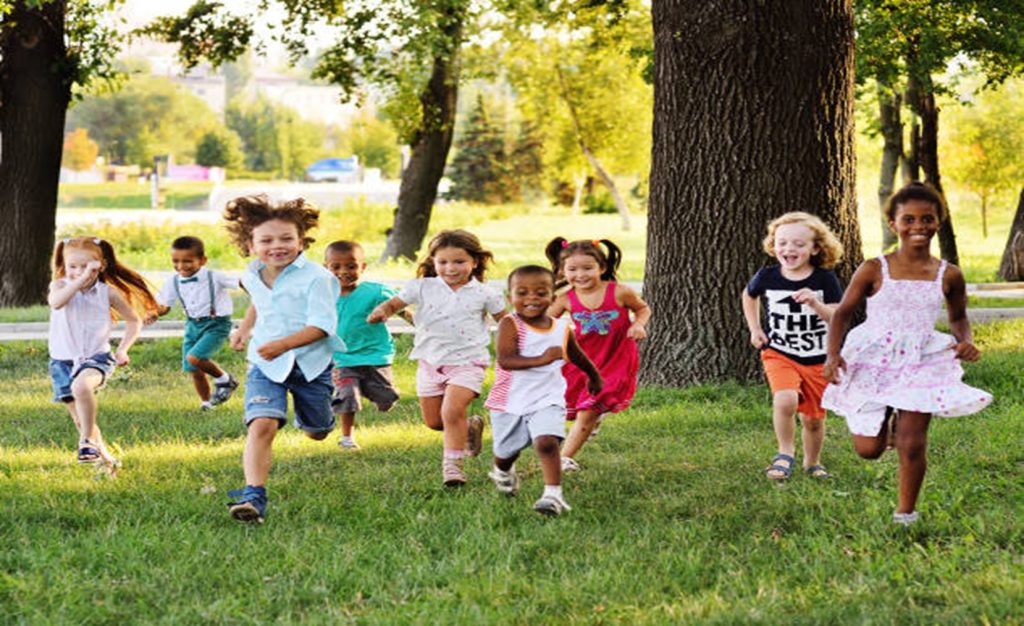13 Before and After School Programs
Dr. Rachel Stewart and Olivia Nelson
Introduction
Before and after-school (BAS) programs are an integral part of the school day and are often overlooked. BAS educators provide care that is critical for many children and their families. It is important for us as educators to understand the role of BAS educators and that it is more than just watching children until their families pick them up. White et al. (2022) explained that BAS programs are effective spaces for fostering social and emotional learning (SEL), especially among school-age children. Schools are often spaces where there is an added pressure to support children while teaching provincial curriculum content. BAS programs can be places where the focus can be solely on building responsive classroom dynamics and relationships with an SEL focus.
The use of SEL in BAS programs is still an under-researched area and yet preliminary studies that have been done have shown great promise in the benefits of using SEL in BAS programs for school-age children. White et al. (2022) found that educators who use SEL in their BAS programs find success by adopting three key strategies. These strategies include, explicitly taught, planned, and spontaneous strategies.
Explicitly Taught Strategies
BAS educators may encourage SEL in their learning environments by directly teaching about its meaning and how to use it by implementing explicit SEL learning experiences. Some BAS programs may be interested in accessing some of the evidence-based SEL programs that can be used with school-age children in multiple settings.

BAS educators can also explicitly teach with an SEL focus by incorporating SEL into their lessons. These explicit SEL strategies are a bit more teacher-directed by providing children with the vocabulary and modeling required to understand the importance of SEL in our daily lives. BAS activities that are created to scaffold skill building and give children an opportunity to practice and focus on certain skills have been shown to positively impact the development of children’s social and emotional skills (White et al., 2022). BAS educators should still use an inquiry-based or an emergent curriculum focus while planning curriculum for school-age children. However, educators should also make room for explicit SEL learning experiences to help children develop their skills. For example, if the educators are observing bullying issues, or children that are struggling to make friends, or having issues with self-regulation. BAS educators can use explicit SEL teaching strategies in response to provide opportunities for children to learn strategies that will increase their social and emotional development. BAS educators should be explicit in their discussions to help children connect their learning to their lived experiences.
Planned Strategies
Unlike explicit strategies that use more teacher-directed SEL strategies to help students develop their social and emotional skills. Planned strategies can include a variety of activities including the consideration of responsive relationships and the culture of the learning environment. Planned strategies can include both structured and unstructured activities. BAS educators can incorporate planned strategies into unstructured free play while also incorporating SEL into more structured activity times such as planned large group times or specific learning experiences. For example, if there is an interest in science experiments (which is quite common in school-age) educators would use student’s interests by providing an opportunity to complete a science experiment. As educators, we often think of the core subjects or lessons we can teach children. However, planned strategies with an SEL focus can incorporate both. So, BAS educators can plan a science experiment with children while also planning on using language and strategies that aid children in emotional regulation when they find a challenging task throughout this learning experience. The ability to self-regulate when given a challenging task is key to overall success. BAS educators should plan to use these strategies, so children have an opportunity to learn new content while simultaneously developing their social and emotional skills.

Another consideration for planned strategies is to keep positive relationships including the culture of the learning environment in mind. BAS educators have a remarkable role in terms of the impact they have on children’s well-being and development. Studies show that educators can help children develop their social and emotional skills in the classroom through supportive and responsive relationships (White et al., 2022). Another study found that when the culture of the classroom or school embeds SEL into the learning environment children feel more connected to staff and each other (White et al., 2022). BAS educators can affect children’s well-being and development simply by planning and keeping SEL on the forefront of all they do including the connections they make with children and the culture of the learning environment they foster.
Spontaneous Strategies
BAS educators may also use SEL by observing and acting in responsive ways. Often these are called “teachable moments”. Teachable moments create authentic opportunities for learning and connection between educators and children. These “teachable moments” are often spontaneous in that there was no explicit instruction or planned activities. These are moments that happen unexpectedly. When BAS educators act on these teachable moments it provides them a chance to use spontaneous strategies to help students develop social and emotional skills. These spontaneous strategies can provide BAS educators with a chance to incorporate effective modeling, coaching, facilitating, and scaffolding into their programs.

Spontaneous strategies require BAS educators to be observant of their children, their needs, and their interests. It requires great skill to utilize teachable moments effectively. BAS programs are unique spaces that can help children develop their skills with qualified and responsive educators who can focus solely on their overall well-being.
BAS educators should consider further researching how incorporating SEL strategies into their learning environments can benefit their children and programs overall. BAS is a critical component of the school day that supports all children and families. The idea that BAS programs are just places for children to come and stay until their families can pick them up negates the importance of these programs while also ignoring the evidence-based research that continues to grow. BAS programs are unique programs that provide an open opportunity to help school-age children feel safe and respected while giving them a chance to develop their skills the typical school day does not allow.
Learning Environments and BAS Programs
One of the challenges of working in a BAS program is the unique learning environments BAS programs are run and the teams of people these educators work with. Depending on your location in Ontario and how your local programs are structured these educators may have to share a space with a classroom or work off a cart to move within the school. Another scenario could be that the child care that provides the BAS care would have its own designated space in the school for BAS, or in other circumstances students may have to be bussed to a child care centre that would provide that BAS care. Each learning environment can create its own challenges.
BAS educators need to maintain professional connections within the school culture as BAS is an extension of the school day. Within the typical school day many teachers will not see the families, but BAS educators will. This is a key factor that consistently gets overlooked. BAS educators are often the gatekeepers between home and school for many children and families. It should not get lost that many children are at school longer than the teachers are in some cases. The reality is that the school day hours do not match the workday hours for many families. BAS learning environments therefore play a critical role in maintaining consistency and safe spaces for children. If a child arrives early in the morning before school and then is picked up close to the end of the day this child may be at school for over 10 hours, if not more. BAS learning environments have to consider these realities when planning for children. For example, think about how to set-up the environment early in the morning. Think about lighting, sound, etc. Having a calmer environment in the morning will help children ease into their day. Thinking about having a snack available to again help prepare children for their school day. Whether this BAS learning environment is a shared space or a separate space BAS educators should reflect on how the environment supports children in the morning to help them transition to school as well as how that learning environment should change in the afternoon. BAS educators have an opportunity to set the tone for a child’s entire school day, this role is critical and should not be overlooked.
The afternoon learning environment should account for where children are at. Take an assessment of how their day was. The school day can be challenging for several reasons for school-age children, the transition point from after school to home can again set the tone for the rest of the night for these children and their families. BAS afternoon learning environments should be safe and flexible spaces that allow children to explore in ways that were perhaps limited throughout the school day. For example, utilizing physical activity to help children move their bodies after a day of sitting at a desk, or giving students opportunities to talk to their peers and interact using their social and emotional skills. BAS educators should not only think about the learning environment but what resources and materials they are bringing in to help children thrive in this extension of their school day.
Using the Virtual Lab School information make note of the effective indoor and outdoor learning environment considerations for BAS educators:
https://www.virtuallabschool.org/school-age/learning-environments/lesson-1
Role of Physical Activity in BAS Programs
Although children are recommended to engage in at least 60 minutes of physical activity daily, only 20% of children reported meeting these recommended guidelines (Goh et al., 2022). When physical activity is incorporated into school-age classrooms it has been shown to have several benefits. Benefits such as better academic achievement, improvement in brain and cognitive health, increased attention span, and motivation to be more physically active (Guo et al., 2022). BAS programs should and can provide children with more physical activity opportunities. The typical school day requires a great deal of a child’s attention span and focus while also limiting the amount of time they have to be active. Effective BAS programs consider the typical school day limitations in their planning so that children have the chance to move their bodies and interact in ways that aren’t always accessible or available in the typical school classroom. Physical activity is a key factor for the development and well-being of school-age children and therefore BAS educators must understand their role in facilitating opportunities for children to explore physical activity in both their indoor and outdoor learning spaces.

Physical activity is key not just because it is a predictor of better overall health and well-being but it also provides children with skills that help them be successful. For example, as previously stated school-age children must attend and focus for much of the typical school day. It could be argued that the amount of time children spend sitting in their learning environments goes against what we know in terms of what is a developmentally appropriate learning environment for children (Chacón-Cuberos et al., 2020). A good rule of thumb is that a child’s attention span when they are not engaged or interested in the content is about their age (Chacón-Cuberos et al., 2020). If a child is interested or genuinely engaged their attention spans can feel endless. Planning with children’s interests in mind is always the most effective way of encouraging engagement. However, there is another solution as well. That solution is to incorporate physical activity into your planning.
School-age children especially have a great deal of energy and often they do not know where to place that energy as much of their day is fixated on sitting at a desk to pay attention. BAS programs should optimize their role by adding physical activity into their programming. When children have the chance to take movement breaks studies show their attention span not only resets but can increase as well (Chacón-Cuberos et al., 2020). BAS programs can help children develop better skills that will inevitably show throughout the typical school day. BAS educators have a remarkable role in the holistic development of school-age children. Goh (et al. 2022) found that the physical activity that BAS educators use in their programs can create better outcomes for children even throughout their regular classrooms. The skills that BAS educators provide to children in their programs are key to their overall success and have been shown to aid in their retention of classroom content, development of social and emotional skills, as well as their physical well-being.
References
Chacón-Cuberos, R., Zurita-Ortega, F., Ramírez-Granizo, I., & Castro-Sánchez, M. (2020). Physical activity and academic performance in children and preadolescents: a systematic review. Apunts Educación Física y Deportes, 139, 1-9.
Goh, Tan & Leong, Chee Hoi & Fede, Marybeth & Ciotto, Carol. (2022). Before‐School Physical Activity Program’s Impact on Social and Emotional Learning. Journal of School Health. 92. 10.1111/josh.13167.
White, A. M., Akiva, T., Colvin, S., & Li, J. (2022). Integrating Social and Emotional Learning: Creating Space for Afterschool Educator Expertise. AERA Open, 8. https://doi.org/10.1177/23328584221101546

